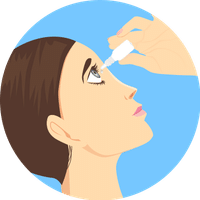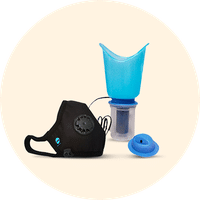Rs.345for 1 bottle(s) (200 ml Liquid each)
Available in other variants
food interaction for Relux Liquid
alcohol interaction for Relux Liquid
pregnancy interaction for Relux Liquid
lactation interaction for Relux Liquid
food
alcohol
pregnancy
lactation
Relux Polyethylene Glycol Oral Laxative Liquid | Sugar-Free may be taken with or without food, but it is better to take it at a fixed time.
None
None
CAUTION
It is not known whether it is safe to consume alcohol with Relux Polyethylene Glycol Oral Laxative Liquid | Sugar-Free. Please consult your doctor.
CONSULT YOUR DOCTOR
Relux Polyethylene Glycol Oral Laxative Liquid | Sugar-Free may be unsafe to use during pregnancy. Although there are limited studies in humans, animal studies have shown harmful effects on the developing baby. Your doctor will weigh the benefits and any potential risks before prescribing it to you. Please consult your doctor.
CONSULT YOUR DOCTOR
Information regarding the use of Relux Polyethylene Glycol Oral Laxative Liquid | Sugar-Free during breastfeeding is not available. Please consult your doctor.
CONSULT YOUR DOCTOR
SALT INFORMATION FOR Relux NA Liquid
Polyethylene Glycol(NA)
Relux liquid uses
{med_name} is used in the treatment of constipation.
How relux liquid works
Relux Polyethylene Glycol Oral Laxative Liquid | Sugar-Free works by drawing water into the intestine through osmosis, which makes the stool soft and easier to pass.
Common side effects of relux liquid
Stomach pain, Nausea, Diarrhea
SUBSTITUTES FOR Relux Liquid
No substitutes foundExpert advice FOR Relux Liquid
- Polyethylene Glycol is used for the treatment of constipation.
- It should preferably be taken at bedtime as it requires 2-3 days to show effect.
- It is usually taken once a day as needed for up to 2 weeks. Take it exactly as prescribed by the doctor.
- Take it atleast 2 hours after taking other medicines, as it may interfere with the absorption of other medicines.
- Inform your doctor if you have a history of stomach disorders such as appendicitis or a blockage in your bowel.
- Some healthy tips to prevent constipation from happening:
- Eat more fiber in your diet. Recommended daily intake is 20-35g
- Drink 8-10 glasses of water per day
- Exercise regularly at least 3 times per week
- Do not hold in stool as that can worsen bowel issues
- Polyethylene Glycol is used for the treatment of constipation.
- Some healthy tips to prevent constipation from happening:
- Eat more fiber in your diet. Recommended daily intake is 20-35g
- Drink 8-10 glasses of water per day
- Exercise regularly at least 3 times per week
- Do not hold in stool as that can worsen bowel issues
- Take it atleast 2 hours after taking other medicines, as it may interfere with the absorption of other medicines.
- It should preferably be taken at bedtime as it requires 6 to 8 hours to show effect.
- It is usually taken once a day as needed for up to 2 weeks. Take it exactly as prescribed by the doctor.
- Inform your doctor if you have a history of stomach disorders such as appendicitis or a blockage in your bowel.
Frequently asked questions FOR Relux NA Liquid
Polyethylene Glycol
Q. What is Relux Polyethylene Glycol Oral Laxative Liquid | Sugar-Free used for?
Relux Polyethylene Glycol Oral Laxative Liquid | Sugar-Free is a medicine used to treat constipation and for intestine preparation before surgical procedures. It works by pulling more water into the intestines, which is called osmosis. When there is more water in the intestines, the stool becomes softer or even watery and is easier to pass.
Q. What are the side effects of Relux Polyethylene Glycol Oral Laxative Liquid | Sugar-Free?
The side effects of Relux Polyethylene Glycol Oral Laxative Liquid | Sugar-Free are stomach pain, nausea, and diarrhea. However, these are usually not bothersome, but if they do not resolve, please consult your doctor.
Q. How long does Relux Polyethylene Glycol Oral Laxative Liquid | Sugar-Free take to work?
Relux Polyethylene Glycol Oral Laxative Liquid | Sugar-Free usually takes 2 to 3 days to start working. It works by increasing the fluid in the small intestine, thus making stools softer and easier to pass. As a result, a bowel movement is stimulated by causing a watery diarrhea.















